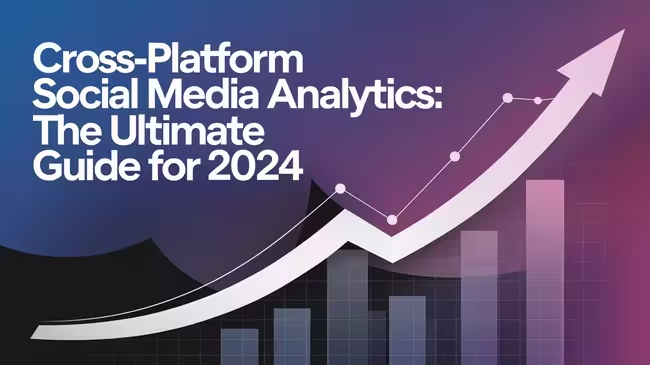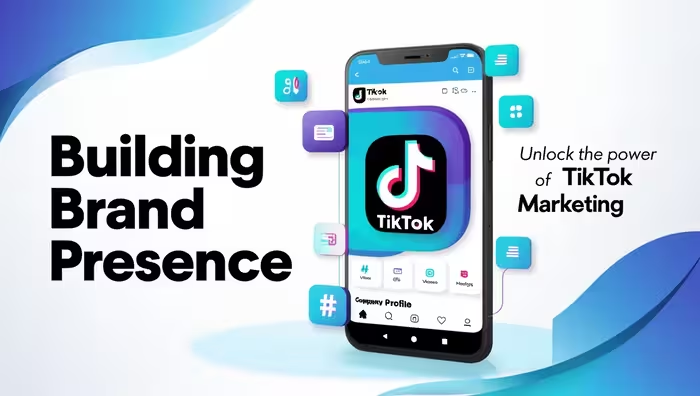Have you ever felt lost in the sea of social media numbers, trying to make sense of likes, shares, and engagement rates across different platforms? You’re not alone! Let’s break down cross-platform social media analytics into bite-sized pieces that anyone can understand and use to improve their social media game.
Understanding Cross-Platform Analytics
What Are Social Media Analytics?
Think of social media analytics as your digital detective toolkit. Just like a detective uses different tools to solve a case, these analytics help you understand how your content performs across various social media platforms.
It’s like having a report card for each post, story, or tweet you share, but instead of just getting grades, you get valuable insights about what your audience loves (or doesn’t love so much).
Let’s say you’re baking cookies – you want to know which recipe works best, right? Social media analytics is like keeping track of everyone’s reactions to different cookie recipes, but instead of taste tests, you’re measuring likes, comments, and shares.
Why Cross-Platform Analysis Matters
In today’s world, your audience isn’t just hanging out in one place. They’re like busy bees, buzzing between Instagram, Facebook, Twitter, LinkedIn, and TikTok. Cross-platform analysis helps you:
- See the big picture of your social media performance
- Understand where your content works best
- Find out when your audience is most active
- Compare results across different platforms
- Make smarter decisions about where to focus your efforts
Key Benefits of Unified Analytics
Having all your analytics in one place is like having a universal remote control – it makes everything easier to manage. The main benefits include:
- Time savings (no more platform hopping!)
- Better pattern recognition
- Consistent reporting
- Easier budget allocation
- Clearer ROI understanding
Essential Metrics Across Platforms
Engagement Metrics
These are the friendly waves and high-fives of social media:
- Likes and reactions
- Comments and replies
- Shares and retweets
- Saves and bookmarks
- Link clicks
Think of engagement like applause – the louder and longer it is, the better your performance was!
Reach and Impression Metrics
Reach and impressions are like counting how many people saw your billboard on the highway:
- Total reach (unique viewers)
- Impressions (total views)
- Story/Reel views
- Video play rates
- Audience growth rate
Conversion Metrics
Direct Conversions
These are the “slam dunks” of social media:
- Website visits
- Sign-ups
- Product purchases
- Download counts
- Form submissions
Assisted Conversions
These are like the assists in basketball:
- Multiple platform touches
- View-through conversions
- Cross-platform customer journeys
- Influencer attribution
- Social proof impact
Platform-Specific Analytics
Instagram Insights
Instagram analytics are like looking through a magnifying glass at your visual content:
- Story completion rates
- Reel play times
- Shopping post interactions
- Profile visits
- Follower demographics
Remember to focus on Reels metrics, as they’re getting the most organic reach in 2024!
Facebook Analytics
Facebook gives you a treasure chest of data:
- Page reach and engagement
- Group activity metrics
- Ad performance data
- Audience insights
- Video retention rates
Pro tip: Don’t forget to check your Facebook Group insights – they’re gold mines for community engagement data!
Twitter Metrics
Twitter analytics are fast and furious, just like the platform itself:
- Tweet impressions
- Profile visits
- Mention reach
- Top tweet performance
- Follower growth
LinkedIn Analytics
LinkedIn’s professional metrics include:
- Post impressions
- Profile views
- Content engagement
- Company page analytics
- Lead generation metrics
TikTok Performance Tracking
TikTok’s unique metrics focus on:
- Video completion rates
- Average watch time
- Follower activity times
- Sound usage stats
- Hashtag performance
Tools and Technologies
Analytics Platforms
These are your Swiss Army knives for social media analysis:
- Hootsuite
- Sprout Social
- Buffer Analytics
- Agorapulse
- Later
Data Integration Tools
Think of these as the bridges between your different data islands:
- API connectors
- Data warehousing solutions
- Custom integration tools
- Automated reporting systems
- Cross-platform dashboards
Reporting Solutions
Good reporting tools turn complex data into simple stories:
- Visual report builders
- Automated report scheduling
- Custom dashboard creation
- Export options
- Real-time monitoring
Creating an Analytics Strategy
Setting Up Tracking
Getting started with tracking is like setting up a security camera system:
- Define your goals
- Choose your metrics
- Set up tracking codes
- Configure your tools
- Test your setup
Data Collection Methods
Collect data like you’re gathering ingredients for a recipe:
- Native platform analytics
- Third-party tools
- Website tracking
- Custom UTM parameters
- Social listening tools
Analysis Frameworks
Your framework is like a map for understanding your data:
- Regular monitoring schedule
- Benchmark setting
- Performance tracking
- Trend analysis
- Competitive comparison
Making Data-Driven Decisions
Interpreting Analytics
Turn your data into actionable insights:
- Look for patterns
- Compare performance
- Track changes over time
- Identify successful content
- Spot improvement areas
Action Planning
Use your insights to create a solid plan:
- Set clear goals
- Create content strategies
- Plan posting schedules
- Allocate resources
- Monitor results
ROI Calculation
Calculate your return on investment:
- Track spending
- Measure results
- Compare platforms
- Analyze cost per result
- Calculate total value
Conclusion
Cross-platform social media analytics might seem overwhelming at first, but it’s really just about understanding your audience and how they interact with your content across different platforms.
By tracking the right metrics, using the proper tools, and making data-driven decisions, you can create a more effective social media strategy that delivers real results. Remember, the goal isn’t just to collect data – it’s to use that data to tell better stories and connect with your audience in meaningful ways.
Frequently Asked Questions
- How often should I check my social media analytics?
Check your analytics at least weekly for day-to-day metrics, and do a deeper dive monthly to spot trends and make strategic decisions. Some metrics, like viral content performance, might need daily monitoring. - Which metrics matter most for my business?
It depends on your goals. If you’re building brand awareness, focus on reach and impressions. For sales, track conversion metrics. For community building, engagement metrics are key. Start with your business goals and choose metrics that align with them. - Do I need expensive tools to track cross-platform analytics?
Not necessarily! Start with the free native analytics tools each platform provides. As your needs grow, you can invest in paid tools that save time and provide deeper insights. - How can I improve my social media performance using analytics?
Look for patterns in your best-performing content, understand when your audience is most active, and experiment with different content types. Use A/B testing and track results to continuously improve. - What’s the best way to present social media analytics to my team or clients?
Create simple, visual reports that focus on key metrics aligned with your goals. Use graphs and charts to show trends, and always include actionable insights and recommendations based on the data.


